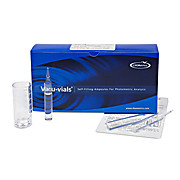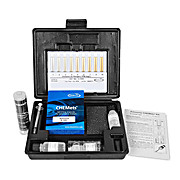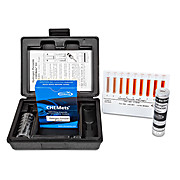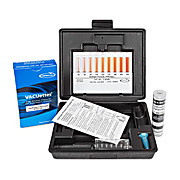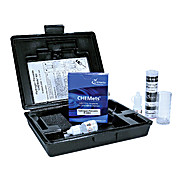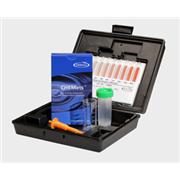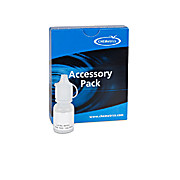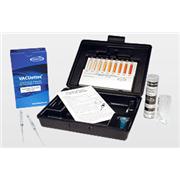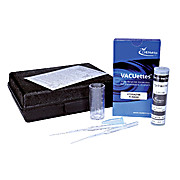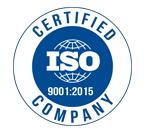CHEMetrics
-
Alkalinity Titrets® Kits
CHEMetricsMethods The alkalinity of water is a measurement of its buffering capacity. Alkalinity of natural waters is typically a combination of bicarbonate, carbonate, and hydroxide ions. Sewage and wastewaters usually exhibit higher alkalinities due to the presence of silicates and phosphates. …
-
Ammonia Accessory Solutions Pack
CHEMetricsQty. per pack: Two 10mL bottles of A-1404 Stabilizer Solution Two 10mL bottles of A-1405 Catalyzer Solution Two 10mL bottles of A-1406 Activator Solution Shelf-life: 8 months The A-1410 Accessory Solutions Pack supplies enough of each solution to perform approximately 80 tests.
-
Sulfate - Vacu-vials Instrumental Kit
CHEMetricsThe CHEMetrics vacu-vials instrumental kit is an ideal thing to have in any chemical laboratories, healthcare units or medicinal facilities for a wide range of purposes such as scientific research and development.
-
Nitrate Vacu-vials Kit, Range: 0-50.0 ppm
CHEMetricsNitrate is the most completely oxidized form of nitrogen. It is formed during the final stages of biological decomposition, either in wastewater treatment facilities or in natural water supplies. Low-level nitrate concentrations may be present in natural waters. However, a Maximum Contaminant Level…
-
Because of its strong oxidizing properties, chlorine is an excellent biocide used to treat potable waters, municipal wastes, and swimming pools. When used to treat potable water, chlorine helps alleviate the adverse effects of iron, manganese, ammonia, and sulfide. The Maximum Residual Disinfectant…
-
The CHEMetrics® V-2000 Photometer is the most advanced portable microprocessor-based LED colorimeter on the market today. Packed with features, this portable water analyzer automatically tests pre-programmed (50+) analytes using CHEMetrics Vacu-vials® self-filling, pre-measured ampoules.…
-
COD Vials Kit
CHEMetricsRange: 0-15,000 ppm (HR+) Not USEPA Approved* Method: Dichromate Reactor Digestion Kit comes in a cardboard box and contains everything needed to perform up to 97 tests (except distilled water): 98 vials and instructions. All COD Kits require the use of a Digestor Block and the…
-
Formaldehyde CHEMets Kit
CHEMetricsFormaldehyde, a toxic substance, is used in the following applications: metal plating baths, textile treatments, biological specimen preservatives, and disinfectants of medical equipment. Commercial formaldehyde gas is readily soluble in water. The Purpald Method Reference:…
-
Sulfide Comparator
CHEMetricsThe CHEMetrics sulfide comparator is an ideal thing to have in any chemical laboratories, medicinal facilities or healthcare units for a wide range of purposes such as scientific research and development.
-
Nitrate CHEMets Kit, Range: 0-45 ppm
CHEMetricsNitrate is the most completely oxidized form of nitrogen. It is formed during the final stages of biological decomposition, either in wastewater treatment facilities or in natural water supplies. Low-level nitrate concentrations may be present in natural waters. However, a Maximum Contaminant Level…
-
Low-level ammonia nitrogen may be naturally present in water as a result of the biological decay of plant and animal matter. Higher concentrations in surface waters can indicate contamination from waste treatment facilities, raw sewage, industrial effluents (particularly from petroleum refineries),…
-
Hydrogen peroxide is a strong oxidizing agent with a variety of uses. Applications include the treating of industrial effluents and domestic waste and serving as a disinfectant in aseptic packaging. For the food and beverage industry, CHEMetrics Hydrogen Peroxide CHEMets® and…
-
Because of its strong oxidizing properties, chlorine is an excellent biocide used to treat potable waters, municipal wastes, and swimming pools. When used to treat potable water, chlorine helps alleviate the adverse effects of iron, manganese, ammonia, and sulfide. The Maximum Residual Disinfectant…
-
Low-level ammonia nitrogen may be naturally present in water as a result of the biological decay of plant and animal matter. Higher concentrations in surface waters can indicate contamination from waste treatment facilities, raw sewage, industrial effluents (particularly from petroleum refineries),…
-
Nitrate Vacu-vials Kit, Range: 0-7.50 ppm
CHEMetricsNitrate is the most completely oxidized form of nitrogen. It is formed during the final stages of biological decomposition, either in wastewater treatment facilities or in natural water supplies. Low-level nitrate concentrations may be present in natural waters. However, a Maximum Contaminant Level…
-
Silica CHEMets® Kits
CHEMetricsSilica (SiO2) is the oxide of silicon, the second most abundant element in the earth's crust. Silica is present as silicates in most natural waters. Typical concentrations lie between 1 and 30 mg/L. Higher concentrations may exist in brackish waters and brines. The silica content of…
-
Hydrogen peroxide is a strong oxidizing agent with a variety of uses. Applications include the treating of industrial effluents and domestic waste and serving as a disinfectant in aseptic packaging. The Ferric Thiocyanate Method Reference: D. F. Boltz and J. A. Howell, eds.,…
-
Glycol CHEMets Kit
CHEMetricsEthylene glycol and propylene glycol are the primary ingredients in commercially-available antifreezes. They are used with various corrosion inhibitors to protect metal surfaces in cooling water systems. CHEMetrics glycol kits are used to monitor potable waters for glycol contamination…
-
Hydrogen peroxide is a strong oxidizing agent with a variety of uses. Applications include the treating of industrial effluents and domestic waste and serving as a disinfectant in aseptic packaging. For the food and beverage industry, CHEMetrics Hydrogen Peroxide CHEMets® and…
-
Dissolved Oxygen SAM Kit
CHEMetricsRange: 0-15.0 ppm Method: Indigo Carmine SAM Kit comes in a plastic case and contains everything needed to perform 30 tests: Vacu-vials Kit, SAM Photometer, 4AAA batteries, screwdriver, light shield and instructions.
-
Ammonia HBA Test Kit
CHEMetricsLow-level ammonia nitrogen may be naturally present in water as a result of the biological decay of plant and animal matter. Higher concentrations in surface waters can indicate contamination from waste treatment facilities, raw sewage, industrial effluents (particularly from petroleum refineries),…
-
Iron is present in nature in the form of its oxides, or in combination with silicon or sulfur. The soluble iron content of surface waters rarely exceeds 1 mg/L, while ground waters often contain higher concentrations. The National Secondary Drinking Water Standard for iron is 0.3 mg/L, as iron…
-
Chlorine Comparator
CHEMetricsThe CHEMetrics chlorine comparator is ideal for drinking water applications, by detecting the percentage of chlorine present in water. It is easy to use and ensures accurate testing.
-
Hydrogen peroxide is a strong oxidizing agent with a variety of uses. Applications include the treating of industrial effluents and domestic waste and serving as a disinfectant in aseptic packaging. For the food and beverage industry, CHEMetrics Hydrogen Peroxide CHEMets® and…
-
Nitrate CHEMets Kit, Range: 0-2700 ppm
CHEMetricsNitrate is the most completely oxidized form of nitrogen. It is formed during the final stages of biological decomposition, either in wastewater treatment facilities or in natural water supplies. Low-level nitrate concentrations may be present in natural waters. However, a Maximum Contaminant Level…
-
Sulfide Vacu-vials® Kits
CHEMetricsSulfides are naturally present in ground waters as a result of leaching from sulfur-containing mineral deposits. Surface waters do not usually contain high sulfide concentrations. Sulfides result from the decomposition of organic matter, from bacterial sulfate reduction under anaerobic conditions…
-
Hardness is a measure of the mineral content of water. Calcium and magnesium are the most common minerals that contribute to hardness. Hard water causes scaling in boilers and other industrial equipment, and diminishes the effectiveness of soaps and detergents. The EDTA Method (Total) …
-
The accessory pack supplies enough solution to perform at least 200 tests.
-
Hydrogen peroxide is a strong oxidizing agent with a variety of uses. Applications include the treating of industrial effluents and domestic waste and serving as a disinfectant in aseptic packaging. The Ferric Thiocyanate Method Reference: D. F. Boltz and J. A. Howell, eds.,…
-
Hydrazine VACUettes Kit, Range: 0-50 ppm
CHEMetricsHydrazine is a powerful reducing agent that is used in various chemical processes and in boiler water as an oxygen scavenger. To control corrosion, residual hydrazine typically is maintained in the 0.05 to 0.1 mg/L range. Higher levels may be used to guard against corrosion when the boiler is out…
-
Persulfate CHEMets Kit
CHEMetricsPersulfate is a strong oxidizer that is commonly used for clarifying swimming pools and spas and for the destruction of a broad range of soil and groundwater contaminants. Sodium persulfate is frequently used for environmental applications. The Ferric Thiocyanate Method Reference: D.F.…
-
Sulfide Comparator
CHEMetricsThe CHEMetrics sulfide comparator is a suitable thing to have in any chemical laboratories, medicinal facilities or healthcare units for a wide range of applications such as scientific research and development.






